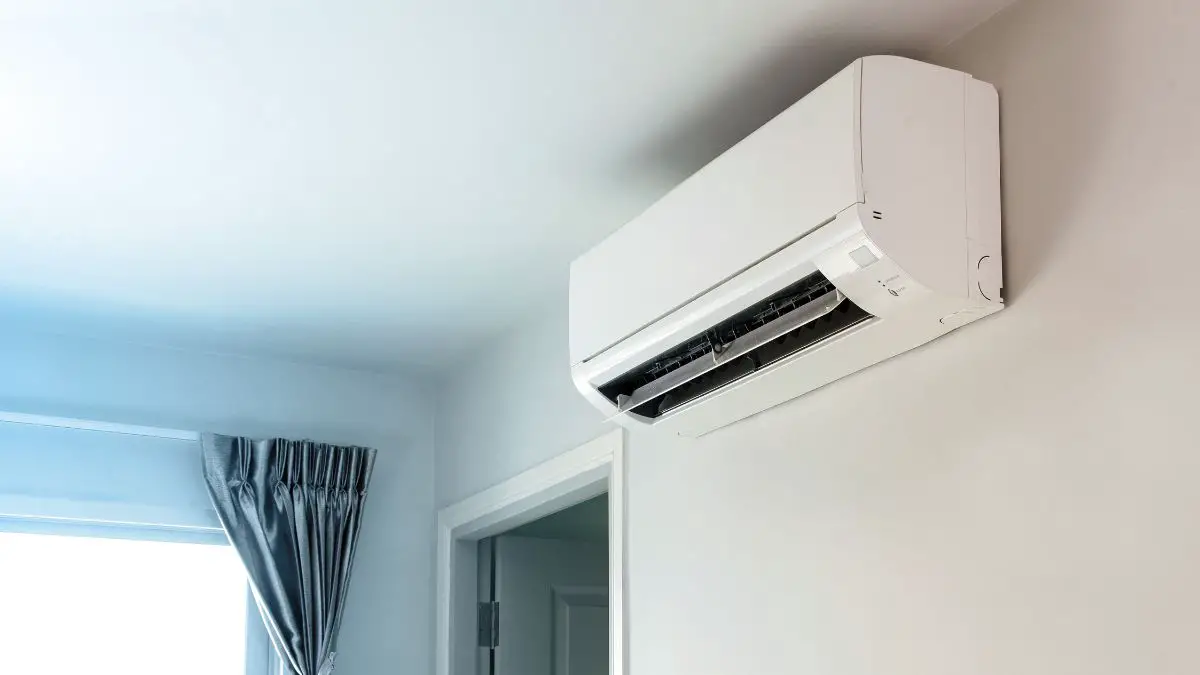You should consider mini split installation costs if you plan to update your air conditioning this summer. Unlike traditional central air conditioning systems, mini-splits consist of an outdoor compressor or outdoor condenser unit and one to several indoor units, which can be wall-mounted or ceiling-mounted, depending on the space.
A single mini split system can cost $1,500 to $3,000 to install. A multi-zone mini split for the whole house can cost $2,500 to $7,500 or more, depending on the number of indoor units and their BTU size.
Mini-split AC systems are affordable for cooling and heating larger homes, offering flexibility and energy efficiency. These systems consist of an outdoor condenser unit and indoor air handling units, which can be wall-mounted or installed as ceiling cassettes.
With a remote control, users can easily adjust the temperature and settings anywhere in the room. While the initial ductless heat pump installation cost may require some money upfront, mini splits are known for their cost-effectiveness in the long run.
They have a typical range of SEER ratings, ensuring energy savings and lower monthly utility bills. Overall, mini-split AC systems provide an efficient cooling and heating solution for larger homes while offering convenience and control at the touch of a button.
The indoor units are connected to the outdoor additional unit by refrigerant lines that run through a small hole in the wall. This design allows for more flexibility regarding placement and zoning, as each indoor unit can be controlled independently.
| Key Takeaways |
|---|
| The average installation time for a single-zone unit is 8 to 12 hours, while multi-zone units may take 16-20 hours or more. |
| Negotiating with contractors can result in discounts or favorable pricing for the installation project. |
| Additional costs beyond installation can include electrical work, permitting fees, and ongoing maintenance expenses. |
| Factors affecting installation costs include unit size and type, number of indoor units, location of installation, and installation complexity. |
| DIY installation requires expertise and careful research to avoid safety hazards and unit damage. |
| Rebates and tax credits from utility companies and government programs can reduce overall installation costs. |
| Negotiating with contractors can potentially result in discounts or favorable pricing for the installation project. |
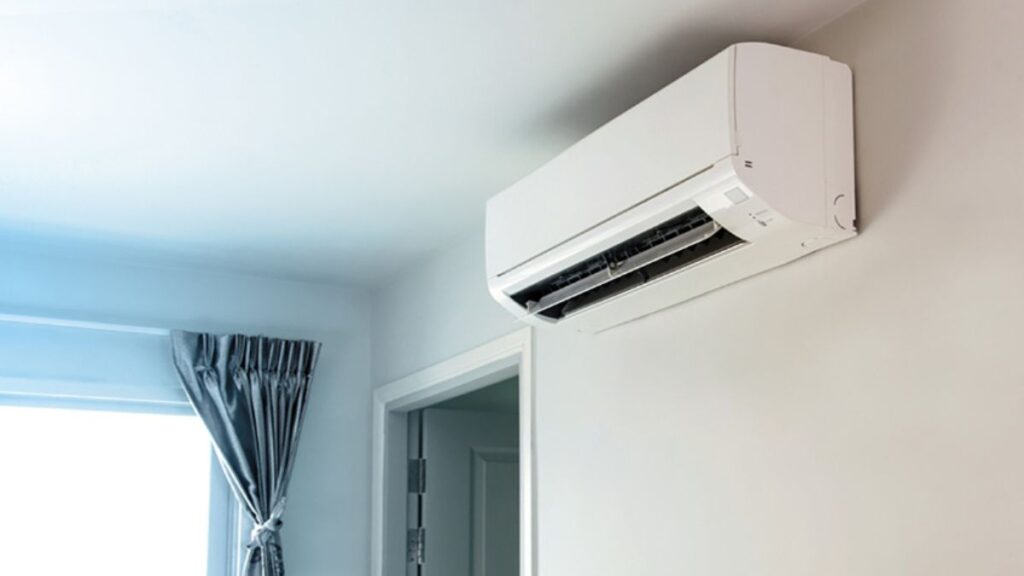
The Popularity of Mini Splits
The increasing popularity of mini-split systems can be attributed to several factors. First, they are highly efficient when it comes to energy usage. Mini-splits use less energy than traditional central air conditioning systems, as they don’t have ductwork that can lead to losses in the form of leaks or poorly insulated walls.
Additionally, because each indoor unit operates independently from the others, there is no need to cool or heat unoccupied rooms. Secondly, mini splits offer more versatility in terms of installation options than other HVAC systems.
The lack of ductwork means installation is typically easier and less invasive than other options like central air conditioners or furnaces with extensive ductwork. This makes them ideal for retrofitting spaces where ductwork simply isn’t possible or desirable.
The Importance of Understanding Installation Costs
Mini-split AC systems are ideal for cooling and heating spaces of various square footage, providing efficient and personalized climate control.
While there are many benefits associated with mini split air conditioning and heating systems, it’s important for consumers to understand the average cost associated with the installation before deciding whether this type of system is right for them.
Factors such as unit size and type, number of indoor units required for sufficient cooling/heating capacity, location(s) where the installation will take place (indoors or outdoors), complexity level involved with installing refrigerant lines through walls/ceilings, etc. are all factors that can impact the overall cost of installation.
By understanding these factors and the associated mini split installation cost, consumers can decide whether a mini – split system suits their needs and budget.
We’ll explore these factors in more detail and provide a breakdown of an average mini split installation cost associated with installation so you can make an informed decision when looking into heating and cooling options for your home or business.
Average Time for Mini Split Installation
The time it takes to install a mini – split system varies depending on the complexity of the installation. On average, it takes approximately 8-12 hours for a single-zone unit with one indoor unit to be installed.
The installation time can range from 16-20 hours or more for multi-zone units or larger systems with more indoor units. The initial inspection and installation preparation can also add time to the process.
It’s important to note that the installation process may take longer if there are any unexpected obstacles or complications during installation, such as difficult-to-access areas or pre-existing electrical or plumbing issues. Discussing these potential issues with your installer before beginning the installation process is best.
Additional Costs Beyond Installation
In addition to the cost of the unit itself and the cost of professional installation, additional costs may be associated with installing a mini split system. These can include:
- Electrical work: Depending on your home’s current electrical setup, additional wiring or an upgraded circuit breaker may be required for your ductless system to function properly.
- Permitting fees: Depending on local regulations, you may need permits before installing your ductless mini – split system.
- Maintenance costs: Like any HVAC system, mini splits require regular maintenance to run efficiently and effectively.
These fees can vary depending on your location. This can include filter changes, coil cleaning, and other maintenance tasks that may incur additional costs. It’s important to discuss all potential costs with your installer before beginning the installation process to avoid surprises.
Ductless Mini-Spilt Systems and Their Installation
A ductless AC or a ductless mini-split AC system, also popular as a ductless mini-split heat pump, is a type of air conditioning system that does not require ductwork for air distribution.

A ductless mini-split air conditioner consists of an outdoor unit, which houses the compressor and condenser, and one or more indoor units, which are placed on walls or ceilings in different rooms or zones. The indoor units are connected to the outdoor unit by refrigerant lines that go through a small wall hole.
The installation process for a ductless mini-split A/C system involves the following steps:
- Determining the placement of indoor and outdoor units: The indoor units of ductless air conditioners are strategically positioned in each room or zone where cooling or heating is desired. The outdoor unit is typically placed outside the building, either on the ground or on a wall or roof.
- Mounting the indoor units: The indoor units are mounted on walls or ceilings using brackets or other mounting accessories. They should be positioned at a suitable height and location to ensure optimal airflow and distribution.
- Creating a small hole for refrigerant lines: A small hole is drilled through the wall to connect the indoor and outdoor units. This hole is typically around 3 inches in diameter and is sealed properly to prevent air leakage.
- Connecting the refrigerant lines: The refrigerant lines, which carry the refrigerant between the indoor and outdoor units, are installed through the hole. They are carefully connected to the corresponding ports on both units.
- Electrical connections: Electrical wiring is run from the indoor units to the outdoor unit and connected to the appropriate terminals. This allows for the transfer of power and control signals between the units.
- Testing and commissioning: The system is thoroughly tested once the installation is complete to ensure proper operation. This includes checking refrigerant levels, verifying airflow, and testing temperature control and remote functionality.
It’s important to note that the ductless mini-split installation process may vary depending on factors such as the mini-split system’s specific model, the building’s layout, and any unique requirements or challenges the installation location presents.
You will need to hire a professional HVAC technician who is professional in ductless mini-split A/C installations to ensure a proper and efficient installation.
Top 5 Factors that Affect Mini Split Installation Cost
Mini splits offer a great alternative to traditional HVAC systems, with advantages such as energy efficiency, easy installation, and zoning capabilities. However, the mini split installation cost can vary widely depending on various factors. Understanding these factors is crucial to budgeting for your mini split installation project.
Size and Type of Unit
The size and type of mini split unit you choose will significantly impact its installation cost. Mini split units come in various sizes and types, from single-zone systems designed to cool or heat one room to multi-zone systems capable of servicing an entire home or building.
Larger units will naturally cost more than smaller ones due to their higher capacity and greater complexity.
Moreover, the type of unit you choose can also affect the cost. For instance, ductless mini split systems or ductless ACs are generally easier and faster to install than ducted mini splits due to their lack of ductwork – but ductless mini split installation requires additional electrical work or modifications depending on your home’s current electrical system.
Find out what size heat pump you need for your home. Check out our free Heat Pump Size Calculator and Manual J Calculator.
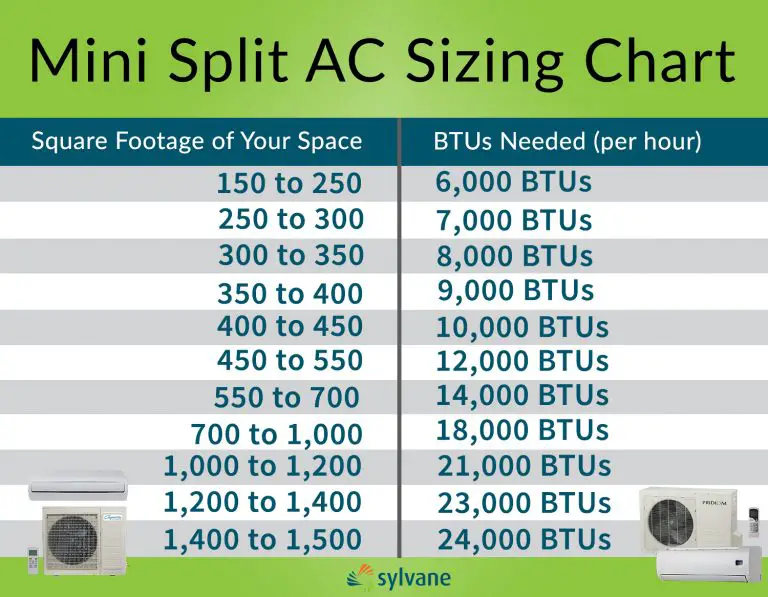
Number of Indoor Units
Another critical factor that affects the mini split installation cost system is the number of indoor units required for your space. Multi-zone systems can feature up to eight indoor units attached to one outdoor unit, but installing additional indoor units adds more complexity and takes extra time, which could increase labor costs.
The size and number of rooms you want your mini-split system installed in also play a role. Generally speaking, larger rooms require bigger indoor units, while smaller rooms need smaller ones which means additional costs for larger installs.
Location Of Installation
The location where you want your mini-split system installed impacts its installation costs too. The distance between air handlers and outdoor units plays a role in determining how much refrigerant piping is needed, which requires more materials leading to increased costs.
Another factor is the accessibility of the installation location. If the installation area is difficult to reach, such as on a rooftop, in an attic, or in a crawlspace, installing will take more time and effort, which can add extra costs.
The Complexity of the Installation
The complexity of your mini split installation project will play an enormous role in determining its cost. Complex installations require more labor time, effort, and, consequently, higher costs.
Different factors that make an installation more complex include retrofitting older homes or buildings with outdated electrical or HVAC systems, having unique spacing considerations between indoor units, or utilizing complex multi-zone setups.
Consider all these factors when planning for your mini split system installation project to estimate what it could cost you. A professional contractor can also help you get a detailed cost quote based on your specific needs.
Efficiency Rating
The efficiency rating of a mini-split AC system is typically measured by two main metrics: SEER and EER.
SEER (Seasonal Energy Efficiency Ratio): SEER measures the system’s cooling efficiency over an entire cooling season. It is calculated by dividing the cooling output (measured in British Thermal Units or BTUs) by the energy input (measured in watt-hours).
A higher SEER rating indicates a more energy-efficient system, as it produces more cooling output for each unit of energy consumed. SEER ratings for mini-split systems typically range from 16 to 30 or higher.
EER (Energy Efficiency Ratio): EER measures the system’s cooling efficiency at a specific outdoor temperature (usually 95°F or 35°C). It is calculated by dividing the cooling output by the energy input at that temperature.
Similar to SEER, a higher EER rating indicates better energy efficiency. EER ratings for mini-split systems are typically in the range of 12 to 28 or higher.
Both SEER and EER ratings are important energy efficiency indicators and can help consumers compare the efficiency of different mini-split systems. It’s important to note that the actual efficiency of a system may vary depending on factors such as operating conditions, system size, and installation quality. It is recommended for larger homes to look for systems with higher SEER and EER ratings to minimize energy bills and reduce environmental impact.
Is SEER2 Better Than SEER?
New SEER2 ratings take into account the efficiency of the cooling system as well as the motor efficiency which creates a more accurate rating.
National Average Cost Range
The national average cost for mini split installation varies depending on the factors listed in section II. However, HomeAdvisor says the average cost is $3,000-$10,000.
This price includes both the cost of materials and labor regarding ductless mini-split install costs from a professional contractor. Remember that this is just a rough estimate, and actual costs may vary. The price range is quite large due to numerous variables that affect the overall cost of installation.
These variables include location, number of indoor units, size and type of unit, complexity of installation, and more. Researching before hiring a contractor or attempting a DIY installation is important.
According to Energy.gov, the cost of installing mini-splits can be higher than some systems. However, lower operating costs, rebates, or other financial incentives can help offset the initial expense.
Regional Differences in Cost
There is also a regional difference in mini split costs across the United States. For example, areas with higher labor costs, such as California or New York, will likely have higher installation fees than areas per square foot with lower labor costs, like Alabama or Mississippi.
In addition to labor cost differences across regions, there may also be differences in material availability and local building codes that can impact overall project expenses. Therefore it is crucial to obtain quotes from local contractors who are familiar with these variations.
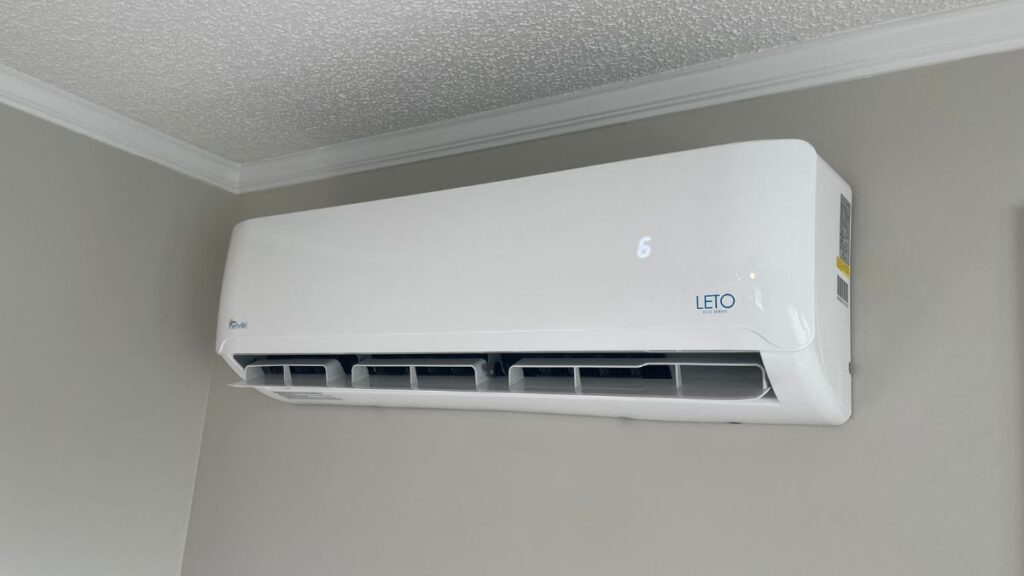
Cost Breakdown by Above Factors
As previously mentioned, several factors influence mini split installation costs, including size and type of unit used; the number of indoor units required; the location where it will be installed; complexity involved during the setup process, such as electrical wiring or ductwork requirements; etc.
To give a general idea of how each factor contributes to the total expenses involved:
- The average mini split system can range from $1,500 to $6,000, depending on the size.
- Installing additional indoor units can add approximately $1,000-$2,500 per unit.
- Installation location can impact prices significantly (e.g., installing outside on ground level vs. rooftop may require more specialized expertise and equipment).
- Other variables affecting the cost include the complexity of electrical wiring and ductwork requirements in the installation process.
It’s important to remember that these are just estimates, and prices can vary significantly depending on your specific situation. Obtaining multiple quotes from contractors is the best way to clearly understand what you can expect to pay for mini split installation cost.
Ways to Save on Mini Split Installation Cost
If you’re looking for ways to save on mini split installation costs, you’re in luck. There are several ways to get lower prices on air conditioning and heating systems, including:
DIY Installation Options
One way to save on mini split installation costs is by doing it yourself. While this may not be an option for everyone, those who are handy and have experience with electrical work and HVAC installation may be able to tackle the project independently. This can save hundreds or thousands of dollars in mini split installation labor costs.
The MrCool DIY heat pumps are true DIY install units that snap together with line sets that come included in the box. With a few tools and basic skills, an owner can install this unit without hiring outside help. They include simple step-by-step instructions and all necessary hardware to make the installation as easy and quick as possible.
However, it is important to note that DIY installation comes with risks, including potential safety hazards and damage to the unit if installed incorrectly. For those who are interested in DIY installation, it is important to thoroughly research the process before starting.
This includes consulting manufacturer instructions, watching video tutorials, and seeking advice from professional customer service representatives if needed. It may also be beneficial to have a professional inspect the installation before turning the unit on to ensure everything is done correctly.
In case of any emergency, you should always have 24/7 emergency service contact numbers to call when they are needed.
Warning
DIY install mini split heat pumps still require some electrical work. You should hire a licensed electrician for wiring heat pumps.
Utilizing Rebates and Tax Credits
Another way to save on mini split installation cost is by taking advantage of rebates and tax credits. Many utility companies offer rebates for installing energy-efficient units like mini splits, which can lower the overall installation cost.
Federal tax credits are also available for energy-efficient home improvements, including HVAC installations.
Check with your local utility company or state energy office to determine what rebates or tax credits are available in your area. They will be able to provide information about current programs and requirements for eligibility.
Negotiating with Contractors
Negotiating with contractors can also help lower the cost of mini split installation. Some contractors may be willing to offer discounts or negotiate prices based on factors such as the timing of the project or bundling services together (i.e., installing multiple mini splits at once).
Homeowners should obtain quotes from multiple contractors before comparing pricing and determining what is reasonable for the project.
When negotiating with contractors for the mini split installation cost, be sure to clearly understand the installation cost estimate service and what is included in the pricing (i.e., materials, labor, permits), as well as any potential additional costs.
Homeowners should also feel comfortable asking questions and expressing concerns throughout the process to ensure they get the best deal possible.
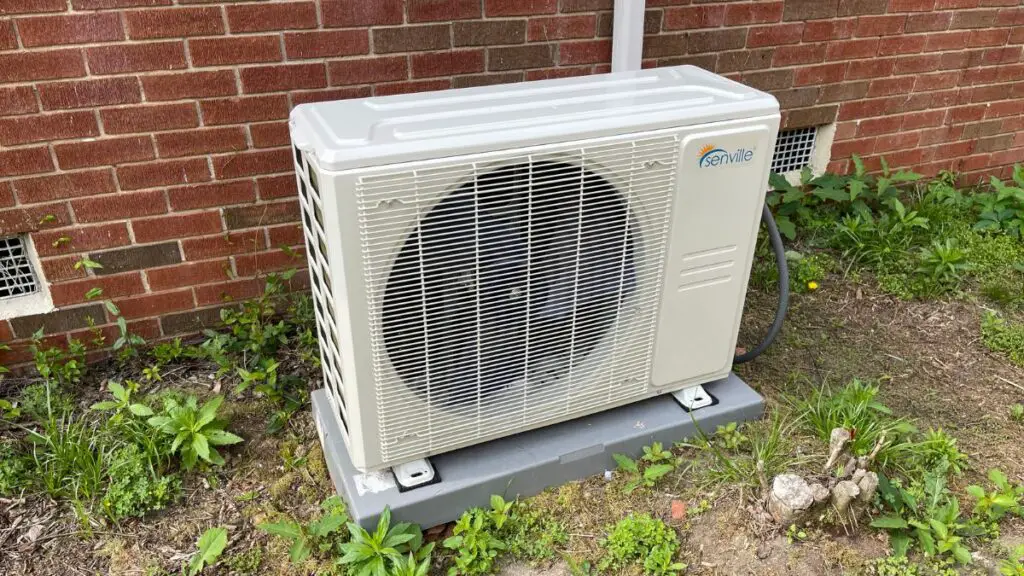
Mini Split Installation Cost FAQs
Here are a few of the questions we often hear about mini split heat pump installation.
How long does it take to install a mini split?
installation time for mini split depends on the complexity of installation. It takes approximately 8 – 12 hours for a single-zone unit along with its indoor unit installation.
Can I install a mini split myself?
Most models aren’t DIY friendly. However, models like the Mr. Cool DIY series are designed for easy installation. The Mr. Cool DIY Series is a great option if you need an AC unit that can be installed without professional help. It comes with detailed instructions and all the necessary parts to ensure you get it done right the first time.
What is the labor cost to install a mini-split?
The labor cost to install a mini-split system can vary depending on factors such as the complexity of the installation, location, and contractor rates. On average, it can range from $3,000-$10,000.
Why do mini-split systems cost so much to install?
Mini-split systems can cost more to install than other HVAC systems due to several factors. These include the need for professional installation, additional electrical work, the potential for ductwork modifications or installation, and the price of the equipment itself.
Is it worth it to install a mini-split?
Whether it is worth it to install a mini-split system depends on individual circumstances. Mini-splits are known for their energy efficiency, flexibility in zoning, and ease of installation. They are suitable for situations where traditional ducted HVAC systems are not feasible or desired, such as in older homes or room additions.
What are the disadvantages of a mini-split?
Disadvantages of a mini-split system include higher upfront costs, the need for professional installation, the potential for increased maintenance compared to traditional systems, and the visual presence of indoor units in each room.
How much does it cost to install a four-zone mini-split?
On average, a four-zone mini split system itself can range anywhere from $3,500 to $8,000, depending on BTU size, brand, and complexity of the installation.
Closing Thoughts
The average mini split cost of installing a system emphasizes the importance of understanding the factors influencing the cost. It highlights key factors such as the size and type of unit, number of indoor units, location, and complexity of the installation.
Ways to save on mini split installation costs include considering DIY installation for those with electrical expertise, taking advantage of rebates and tax credits, and negotiating with contractors.






